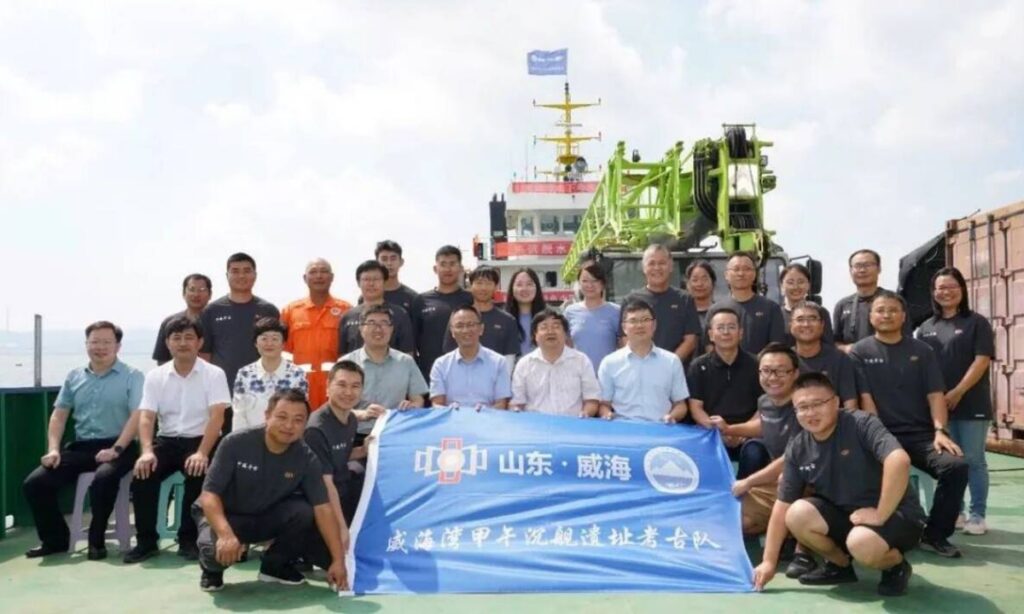An underwater archaeological project to uncover the wreckage of a renowned battleship of the Qing Dynasty (1644-1911) was launched in the city of Weihai, East China’s Shandong Province, according to the Underwater Archaeology Research Center of Shandong.
The project, which will last 60 days, will pump sand and excavate the site where Laiyuan, the flagship vessel of the Beiyang Fleet, capsized during the First Sino-Japanese War, commonly known in China as the Jiawu War.
Laiyuan was completed in Germany in 1887 by the commission of the Qing Dynasty government and joined the Beiyang Fleet the same year.
In February 1895, the ship was torpedoed by the invading Japanese fleet in Weihai Bay.
All 30 people on board died after the battleship capsized and sank in the waters south of Liugong Island.
The project aims to offer clues to the condition of the ship, and provide archaeological materials for the study of the First Sino-Japanese War and the global history of naval ships.
Ye Daoyang, director of the Maritime Silk Road Museum of Guangdong in Yangjiang, South China’s Guangdong Province, told the Global Times that underwater investigation is of utmost significance in the study of modern Chinese history.
“The sunken Laiyuan battleship was destroyed by the Japanese after it capsized and suffered serious damage. Ammunition and articles of daily use are expected to be on the ship or in the sediment,” Ye said.
Gao Wenkui, director of the underwater archaeology research center, said the archaeological team will clean up the sand in a 300-square-meter area around the bow, stern and hull of the sunken ship to determine the condition of the ship.
Some remains will be collected to properly identify the ship and its overall archaeological value will be evaluated, said Gao.
Over 200 pieces of relics were collected from an investigation into Jingyuan, another sunken warship of the Beiyang Fleet, by the underwater archaeology research center of Shandong, in October 2022.
Among the relics was a 210 mm Krupp shell, the largest caliber shell ever found in underwater investigation. The boiler and ammunition rooms of the ship were also identified.
In July, an underwater archaeology forum was held in Shandong to discuss underwater archaeological technology, changes in the historical status of ports and harbors, and underwater cultural relics protection and management.
(Global Times)




